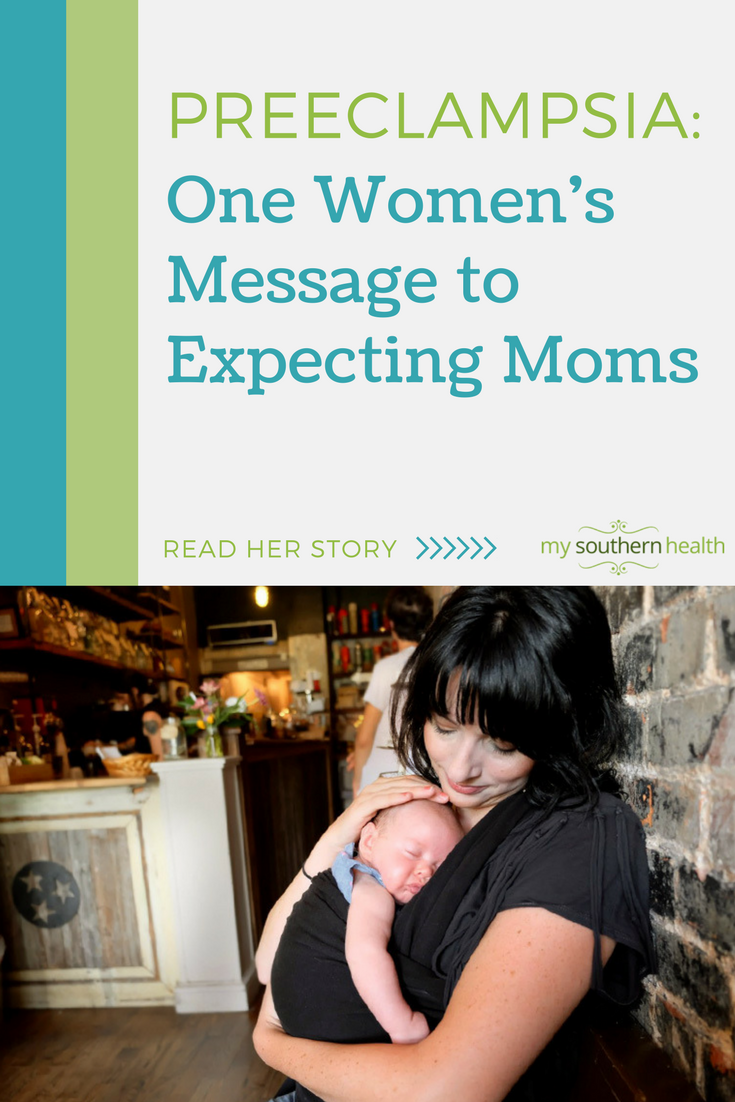One mom tells her story of coming back from preeclampsia.
Danielle Simpler has a message for all women who are pregnant (or hope to become so): “Every pregnant woman should know what preeclampsia is and that it does not discriminate,” said the Nashville mother of two.
Preeclampsia is high blood pressure that develops during pregnancy, usually after the 20-week point. It affects about 3 to 5 percent of pregnant women in the United States, and it can lead to very serious complications to both mother and baby if not addressed.
“Preeclampsia can happen to any pregnant woman,” noted Dennis McWeeney, M.D., an obstetrician-gynecologist with Vanderbilt Women’s Health.
Preeclampsia signs and symptoms
- High blood pressure: 140/90 is the threshold for diagnosing mild preeclampsia.
- Protein in the urine: If a pregnant woman has high blood pressure, the next step is to collect her urine over 24 hours to see if it contains high protein levels, or proteinuria.
- Unusual swelling: Many pregnant women notice swelling in their legs and feet, but women with preeclampsia often develop swelling in their face and hands, too.
- Headache, nausea and blurred vision or changes in vision: It’s easy to write off this kind of symptom because it seems less specific, but it’s important to monitor changes because they could herald a developing problem.
Unfortunately, Simpler knows the truth of her message from firsthand experience. She unexpectedly developed severe pre-eclampsia when 27 weeks pregnant with her second child several years ago.
“I noticed I’d had trouble sleeping the night before, and I had a really bad headache,” Simpler remembered. “But I kept thinking it was just sinus stuff.”
But over the course of the day, the headache persisted, and then she began feeling nauseated. She began vomiting—and then she began bleeding. Her husband rushed her to Vanderbilt, where the doctors realized she had a placental abruption, as well a serious complication from preeclampsia known as HELLP syndrome.
Sadly, for Simpler, her baby girl did not survive. But the Vanderbilt team was able to stabilize Simpler and save her life.
“Thankfully, Dr. McWeeney was there, and he knew what to do,” said Simpler.
Clearing up misconceptions
“You think that it’s something that just happened in the olden days,” said Simpler, who hopes by telling her story, to clear up some of the misconceptions people might have about preeclampsia.
For example, it’s not just women who are pregnant for the first time who can develop preeclampsia. Simpler already had a young son when she developed it. And while delivering the baby can often resolve the problem, preeclampsia doesn’t just magically disappear when the baby arrives.
“After all that, I was in out of the hospital for about two weeks, trying to get my blood pressure stabilized,” Simpler said. “I was on medication for high blood pressure four about six months afterward.”
Finally, Simpler wants to remind people that there is hope. When Simpler and her husband decided to try to have another baby, McWeeney saw her every two weeks and closely monitored her blood pressure. And on June 1, the Simpler family will celebrate the first birthday of Fiona Simpler. “She is healthy and she is happy, and we are so glad she’s here,” Simpler said.
McWeeney said he’s so pleased for Danielle Simpler—and proud of her, too, for being willing to try again. He also stressed the important of early diagnosis and recognition. Knowing the signs of preeclampsia and getting regular monitoring may help a woman avoid developing severe complications.
“If something changes in your body, tell your provider,” McWeeney said. “I’d rather see someone five times and tell them everything’s fine than have someone come in and be really sick.”


Vanderbilt Women’s Health provides care for women at all stages of their lives at locations across Middle Tennessee. Learn more here or call 615-343-5700.

